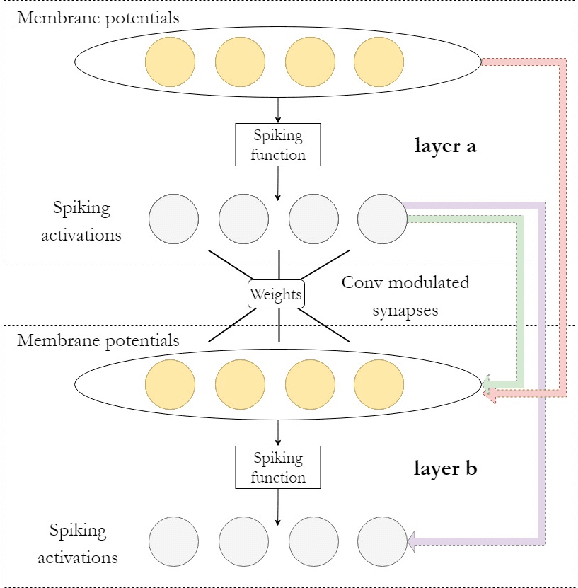Keys to Accurate Feature Extraction Using Residual Spiking Neural Networks
Paper and Code
Nov 12, 2021



Spiking neural networks (SNNs) have become an interesting alternative to conventional artificial neural networks (ANN) thanks to their temporal processing capabilities and their low-SWaP (Size, Weight, and Power) and energy efficient implementations in neuromorphic hardware. However the challenges involved in training SNNs have limited their performance in terms of accuracy and thus their applications. Improving learning algorithms and neural architectures for a more accurate feature extraction is therefore one of the current priorities in SNN research. In this paper we present a study on the key components of modern spiking architectures. We empirically compare different techniques in image classification datasets taken from the best performing networks. We design a spiking version of the successful residual network (ResNet) architecture and test different components and training strategies on it. Our results provide a state of the art guide to SNN design, which allows to make informed choices when trying to build the optimal visual feature extractor. Finally, our network outperforms previous SNN architectures in CIFAR-10 (94.1%) and CIFAR-100 (74.5%) datasets and matches the state of the art in DVS-CIFAR10 (71.3%), with less parameters than the previous state of the art and without the need for ANN-SNN conversion. Code available at https://github.com/VicenteAlex/Spiking_ResNet.
 Add to Chrome
Add to Chrome Add to Firefox
Add to Firefox Add to Edge
Add to Edge